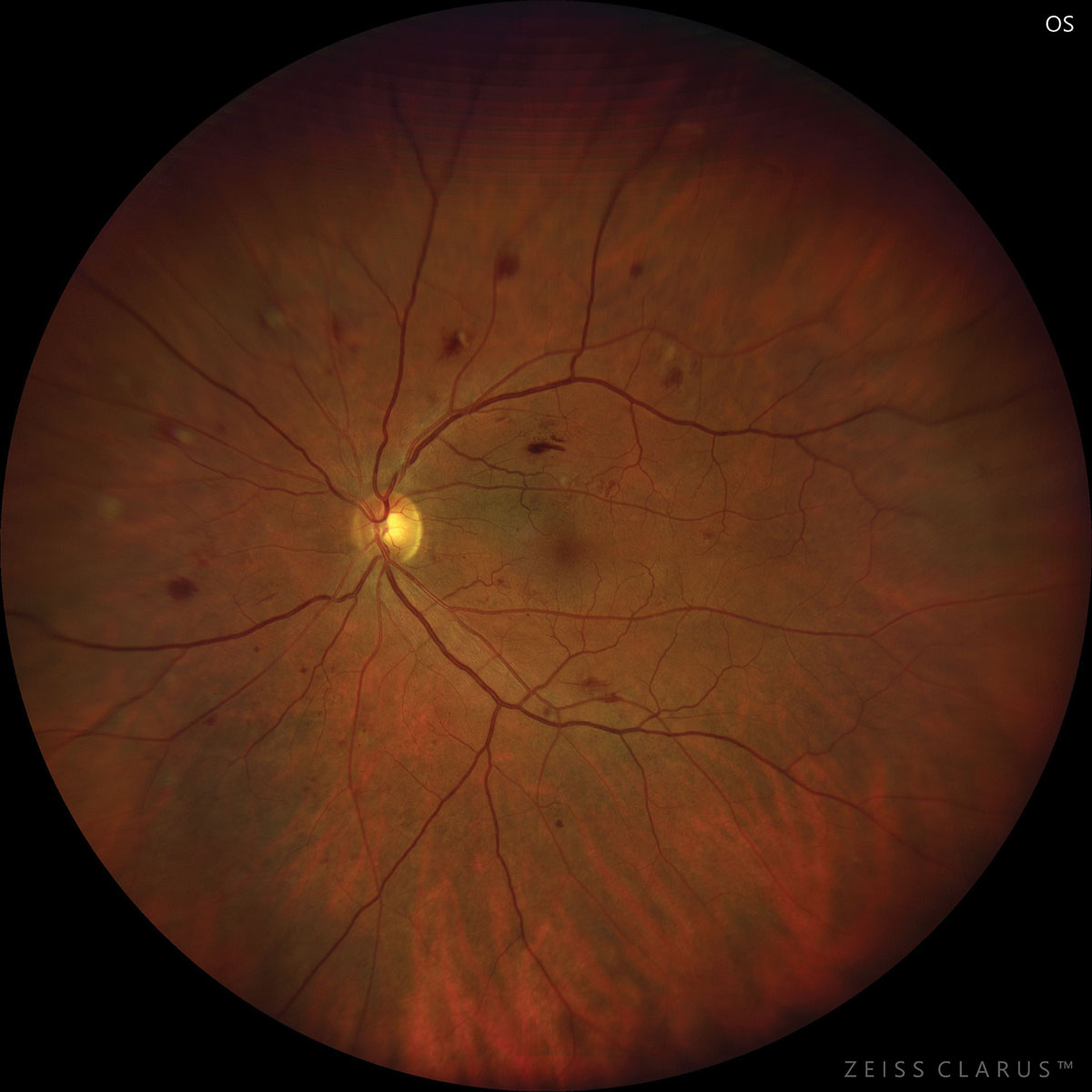 |
Children with type 2 diabetes are at increased risk of vision loss from early retinal problems. Photo: Jay Haynie, OD. Click image to enlarge. |
The Treatment Options for Type 2 Diabetes in Adolescents and Youth (TODAY) study and its follow-up, TODAY2, assessed diabetes management and diabetic retinopathy progression between 2004 and 2020 in nearly 700 participants with newly diagnosed type 2 diabetes (T2D) between the ages of 10 and 17. In a more recent study, researchers evaluated changes in retinal thickness and morphology using OCT in youth with T2D from the TODAY and TODAY2 studies and identified systemic biomarkers correlating with these changes.
The authors investigated longitudinal OCT changes that occurred over seven years and found selected increases in retinal thickness correlating with HbA1c and fasting glucose levels, as well as an increased prevalence of abnormal vitreomacular features. After adjusting for age, sex, race/ethnicity and treatment, they found a significant decrease in the thickness of the outer retina in both the central and inner subfield between the two assessments.
“Similar to the outer retinal thinning, we also found an overall decrease in the photoreceptor layer in the central subfield over time,” the authors explained in their paper for the Ophthalmology journal. “In addition to the increase in T2D duration, our study cohort also exhibited persistent BMI elevations (higher than the 95th percentile at both assessments), reflecting a clinical profile with multiple comorbidities that affect the integrity and health of the retina.”
They also found an increase in inner retinal thickness in the inner subfield over time, which was also seen in linear regression analysis of thickness changes by specific risk factors. Specifically, HbA1c increases were associated with increased total retinal thickness in the center subfield, while higher levels of fasting glucose were associated with increased inner retinal thickness. These findings suggest that glycemic control is an important predictor of change in retinal thickness over time, according to the authors.
The study concluded that youth with T2D are at increased risk of early retinal complications, many of which are detectable on OCT.
“The changes in retinal thickness correlating with HbA1c, fasting glucose and blood pressure levels, and the increased prevalence of abnormal vitreomacular features place this unique patient population of primarily minority youth at an increased risk of vision loss,” the authors concluded. “Appropriate management of systemic risk factors is essential to prevent the progression of these anatomic changes over time and the development of visual impairment in adulthood.”
Mititielu M, Uschner D, Doherty L, et al. Retinal thickness and morphology changes on optical coherence tomography in youth with type 2 diabetes: findings from the TODAY Study. Ophthalmology. June 22, 2022. [Epub ahead of print]. |


